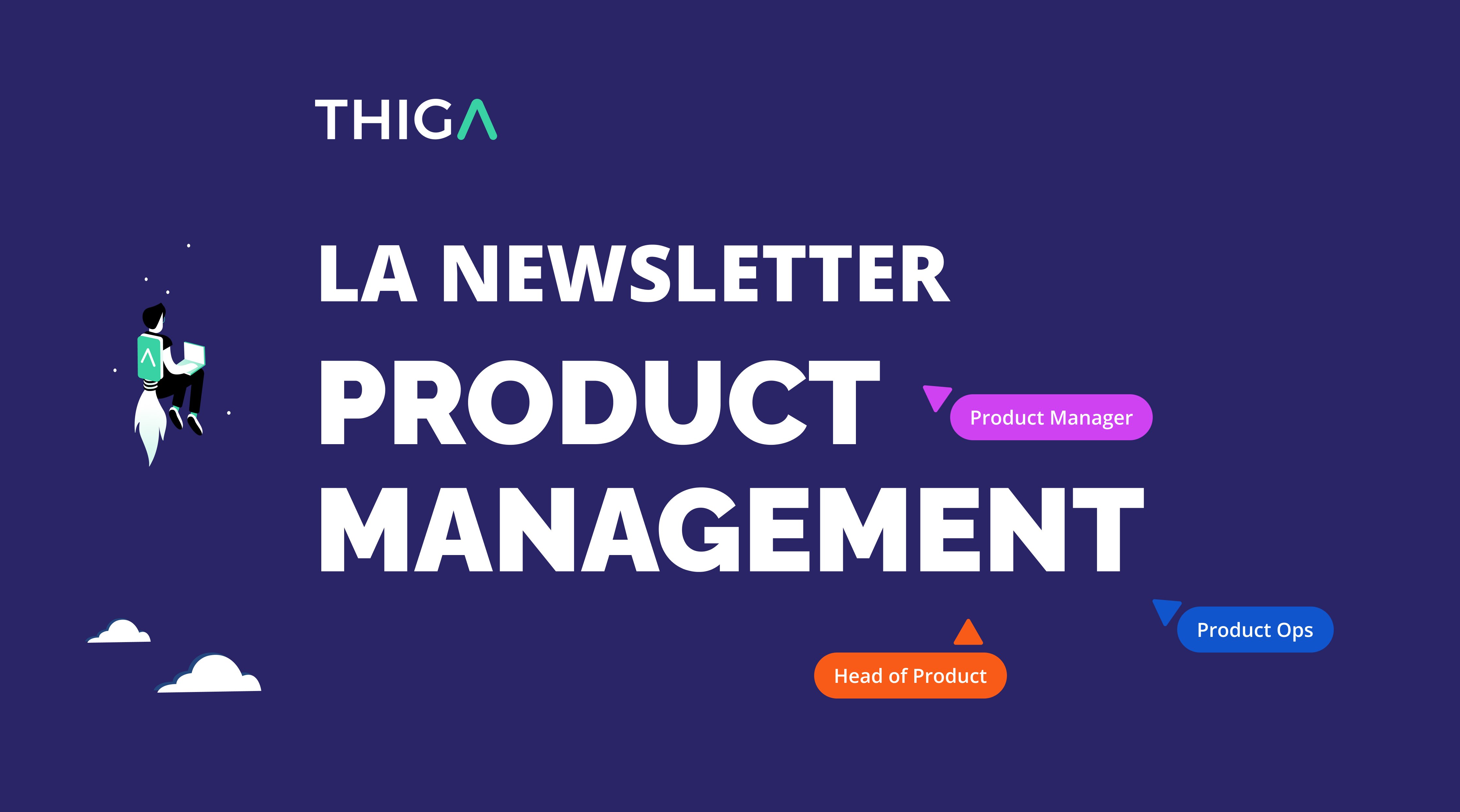We've all heard of the Pareto Principle—20% of efforts drive 80% of results. But in Product Management, the opposite often happens. 80% of features go unused, creating waste instead of value. In this article, Product expert and Thiga Partner Kai Hansen explores the Anti-Paretto Principle: building more doesn’t mean achieving more. The real challenge? Cutting the clutter and focusing on what truly matters.
There’s an uncomfortable truth whispered in Product Management and Engineering circles: According to a 2019 study by Pendo, 80% of functionality in software products is rarely or never used by the majority of users. Think about your own favorite software, be it a word processor, a design tool, or your phone. How many features do you use regularly? I bet a small set of features creates the majority of value for you.
80/20… Rings a bell, doesn’t it? These numbers remind us of the famous Pareto Principle, which states that 20% of efforts produce 80% of effects. Seems like, in Product Management, we often fall for what we might call the Anti-Paretto Principle: the vast majority of what we build ends up being not very important.
So: The real challenge isn’t optimizing the best-performing 20%—it’s avoiding spending time on the low-performing 80% - focus on what truly matters. Instead of whispering, this statistic should be shouted. It highlights a fundamental flaw in how today’s software is being developed and points to a better way: doing less, to achieve more.
Want to go further? Find out why building great products isn’t enough to sell them!
Build what matters
Successful companies like Apple, Basecamp, Miro, and Stripe exemplify this approach. They prioritize user experience, focus on core functionality, and deliver polished products that are both powerful and intuitive.
Shifting to this approach is about a fundamental change in mindset. It's about moving away from feature quantity and towards product quality, user value, and business impact. A 3x3 approach can help you structure this change.
1. Deeply Understand Your Users
-
Talk to Users Regularly: Conduct user interviews, observe usability testing sessions, and engage in contextual inquiry. Go beyond surveys and feedback forms to truly understand the "why" behind user behavior.
-
Analyze Usage Data: Dive into your product analytics. Which features are being used? Which are languishing? Let data guide your understanding.
-
Focus on Problems, Not Requests: When users request features, dig deeper. What problem are they really trying to solve? And how can you help them do that?
2. Disciplined Idea Filtering and Ruthless Prioritization
-
Clear Product Vision & Strategy: If you don’t have one, create a narrow, focused product strategy. Constantly use it for guidance.
-
Prioritization Frameworks: Use frameworks like Impact vs. Effort, RICE, or MoSCoW to help you evaluate and rank feature ideas.
-
Say "No" More Often: Be comfortable saying "no" to good ideas that don't align with your strategy or user needs. Don't let stakeholders dictate priorities.
3. Invest in Design and Polish
-
Invest in Design: Make usability and aesthetics a core part of your process. Invest in skilled designers and engineers(!) who are passionate about user experience.
-
Polish Core Interactions: Focus on making the most frequently used features and workflows seamless, intuitive, and even delightful.
-
Attention to Detail: Sweat the small stuff. Micro-interactions, clear messaging, consistent design – these details elevate a product from functional to exceptional.
Navigating Stakeholder Pressure
I’ll warn you; adopting the "do less" mindset is not easy. You will face relentless pressure from stakeholders: Sales needs a feature to win the deal. The support team wants a feature that stops users asking questions. The biggest competitor already has the feature. And the CEO demands you to adopt AI (but doesn’t know why…).
Common to all these: Most of them are all situational requests. But building a successful product requires looking beyond the individual request, pain point or deal breaker. It requires a long-term, cohesive thinking process.
Here are ways how to keep your focus on the overall strategy, manage stakeholder requests and avoid the ever-growing FOMO (Fear of Missing Out) pressure:
-
Evangelize: Tirelessly explain the benefits of "do less, but achieve more" to your stakeholders – improved user experience, increased product quality, reduced costs, and faster time-to-value.
-
Be data-informed: Use evidence to support your arguments. Track and report on user engagement, demonstrate the cost of unused features, and experiment before launching.
-
Collaborative Prioritization: Involve stakeholders in your prioritization activities to foster buy-in and shared understanding.
-
Critical Market Monitoring: Analyze competitor features critically. Are they truly valuable? Do they align with your users' needs?
Climbing Out of the Overwhelm
Sadly, many development teams today sit on the other side of the picture. They are hamsters in a wheel, desperately trying to keep up, drowning in feature requests and battling the ever faster pace of technology evolution.
Why is this the case? Several factors contribute:
-
Feature Creep & Bloat: Relentless pressure from executives and business teams leads to adding "just one more feature" to stay competitive or ‘win the deal’.
-
Cutting edge tech: In their pursuit of technical excellence, developers advocate for solutions that are technically impressive but not actually needed by users.
-
Misunderstanding User Needs: Features are built based on unvalidated assumptions or misinterpreted user feedback, rather than deep user understanding.
-
Hesitation to sunset: Many teams find it easy to add features but struggle to remove them once they are no longer valuable.
The consequences of this "feature bloat" are far-reaching:
-
Wasted Development Effort: Product teams waste time and resources on fringe features that could be spent on core improvements or truly innovative features.
-
Greater Complexity & Maintenance Costs: More features mean more code; larger codebases have more bugs, slower performance and increased complexity.
-
Poor User Experience: Overcrowded interfaces make software harder to learn and use effectively. Usability suffers, and user satisfaction declines.
How do you transition to "do less, but achieve more" when you barely have time to breathe? It requires a two-phase approach, neither of which are easy, but essential.
Phase 1: Create Immediate Relief
-
Acknowledge the Overwhelm: Start by acknowledging that the team is overwhelmed; validate their perception.
-
Communicate Upwards: Be transparent with stakeholders about the situation and manage expectations.
-
Emergency Brake: Stop all non-critical feature development. Finish existing work.
-
Triage and Ruthlessly Prioritize: Re-evaluate the feature backlog and identify truly "must-have" tasks. Remember, 80% of stuff won’t be used. Aggressively reduce scope.
Phase 2: Building a Sustainable Approach:
-
Prioritize Prioritization: Thoughtfully and decisively triage and prioritize incoming requests, avoid falling back in the overwhelm.
-
Double Down on User Research: Dedicate time and resources for continuous user research and make it a core part of the development cycle.
-
Address Clutter: Allocate time to address technical debt and proactively sunset product features that contribute to overwhelm and slow down development.
-
Build a Culture: Celebrate quality, user value, and strategic focus. Encourage critical thinking and empower the team to say "no" strategically.
Transitioning to "do less, achieve more" demands courage, clarity, and discipline. It isn’t about quick fixes; it’s a commitment to fundamentally reshaping the way we build products.
Escaping the Anti-Pareto trap means no longer chasing endless backlogs or succumbing to the illusion that more features equal more value. It requires cultivating a culture that relentlessly prioritizes user value, prioritizes quality over quantity, and is based on strategic excellence.
By cutting away at the redundant 80% and dedicating yourself to focus on the essential 20%, you don't merely create better products—you build products that matter, products that resonate, and products that genuinely transform user experiences.
On the same topic, check out our exclusive piece of opinion : "Business and Tech: a love story that’s taking too long to unfold".


.jpg)

